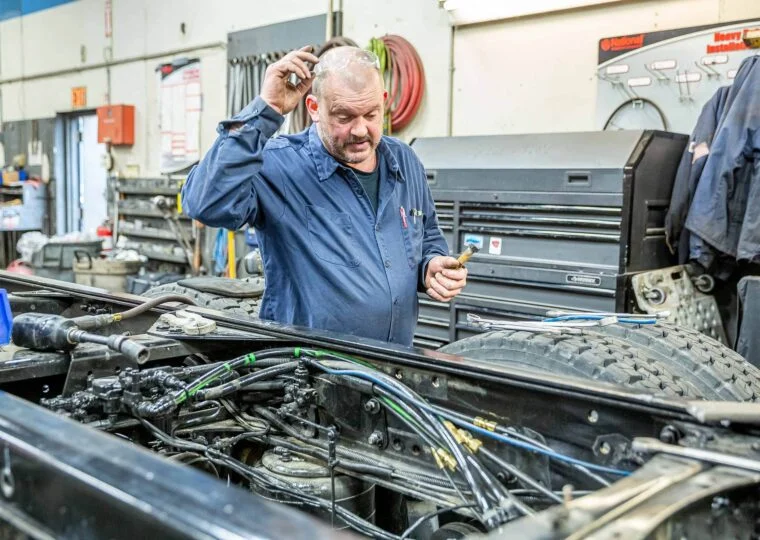In the trucking, transportation and logistics industries, safety is everything. Whether you’re talking about the parts and equipment on your vehicles or the operating practices of the drivers in your fleet, implementing a robust safety program is absolutely imperative.
From both a risk management and reliability perspective, the policies and procedures you create today can prevent something catastrophic from happening tomorrow.
The Importance of a Fleet Safety Program
We’ve all heard the saying “if you fail to prepare, then you prepare to fail.” That’s true in many aspects of life and it applies especially well to the practice of fleet management.
By putting a fleet safety program in place that includes regular vehicle maintenance, routine driver training, and scheduled equipment inspections, you’re making a commitment not only to your employees but also to all the motorists they may encounter while out on the road.
In turn, you’ll be able to reap the benefits in the form of reduced insurance premiums and higher morale among employees. Plus, as you build a reputation as a company that puts safety first, you’re likely to attract new customers who share your values. It’s a win-win all around!
The Elements of a Successful Fleet Safety Program
While fleet safety programs tend to originate from the top, they require buy-in from both drivers and managers to truly be successful. The best safety programs tend to be fluid rather than static, allowing for changes and adjustments to be made based on the company’s goals and needs over time.
Having a strong management unit in place along with frequent communication and input from team members who are directly involved in daily fleet operations can ensure that the safety program is being followed and improvements can be made when necessary.
Driver Screening and Training
In the trucking industry, your drivers are the often main point of contact for your customers and they can make or break your reputation. That’s why it’s critical to hire high-quality, reliable people from the get-go. It all starts with creating a comprehensive screening process that includes background checks, verification of work history and certifications, and even written and road testing. This can help weed out anyone who might become a liability to your company.
Then, once you have the right people in place, conduct regular training sessions so they can learn your company’s standards and procedures and develop safer driving abilities. It’s a great way to ensure you stay in compliance while helping your team members gain valuable skills.
Safe Work Environment & Work Culture
One of the main reasons people leave their jobs is because they don’t feel their environment is physically safe. Another is that the workplace’s culture is toxic and detrimental to their overall well-being.
To prevent those things from happening at your company, it’s important for managers to lead by example. Rather than just talking about safe practices, managers should actively promote safety through their actions by following existing protocols instead of just enforcing them. They should also offer educational opportunities to help their employees grow and thrive.
Finally, they should make their team members feel valued, heard, and respected and communicate that discriminatory, unkind behavior will not be tolerated.
Proactive Management of Fleet Maintenance & Repairs
Preventative fleet maintenance is one of the main responsibilities of fleet managers and when it comes to safety, it’s definitely one of the most important. Fleet maintenance involves the development of thorough and detailed processes that ensure that all vehicles in the fleet are in optimal driving condition.
To handle many tasks such as routine maintenance and repairs, fleet managers rely on sophisticated software to guide them. However, their drivers can be an even more valuable source of information and they should be treated as integral partners in the fleet maintenance process.
By having them perform basic inspections at the beginning and end of their shifts, drivers can identify potential safety hazards and share that information with management so they can be fixed. Just think of them as your first line of defense in your fleet safety program!
Established Procedures and Processes
Unfortunately, even the most carefully created safety programs can’t prevent every accident or equipment malfunction from occurring. When the unexpected strikes, though, it’s critical to have clearly defined policies, procedures, and processes in place.
It’s also important that both drivers and managers regularly educate themselves on what to do during an emergency and even conduct drills on how to handle various situations. By planning for the best while preparing for the worst, you can put yourself in the driver’s seat for safety and success.
Reach Out to a Fleet Safety Expert
Maintaining and servicing your vehicles regularly is the best way to keep them operating at peak performance and you need a reliable, professional fleet servicer you can trust. You’ve found one in Blaine Brothers.
Our dedicated fleet maintenance experts have a true passion for supporting the trucking and transportation community and helping them develop thorough fleet safety programs that protect drivers and motorists alike.
With more than 40 years in the industry, we have the knowledge and expertise you need to keep your fleet running smoothly and safely. Contact us now to learn more about what we can do for you.


